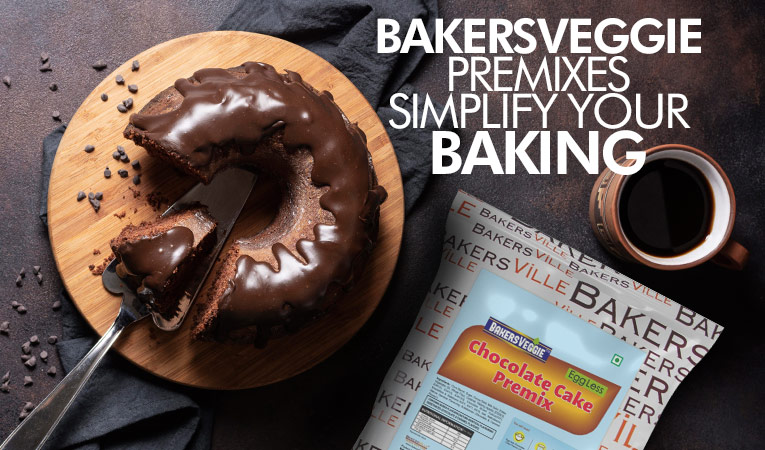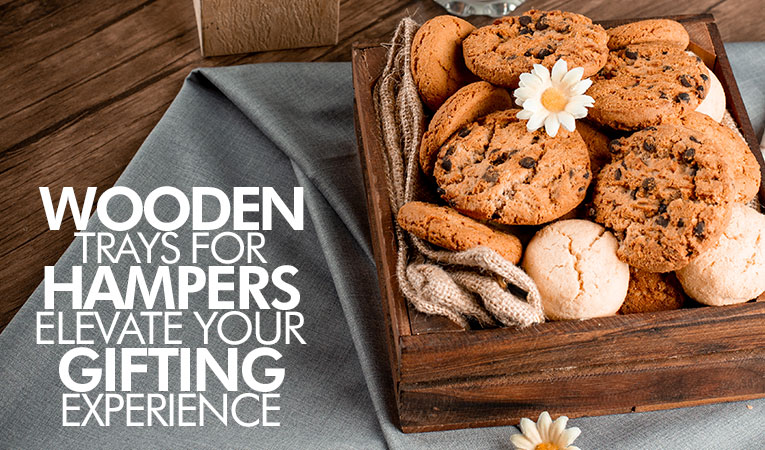How to Prepare & Care for your Banneton Basket?
30-04-2025

If you're diving into the world of sourdough bread baking, chances are you've come across the term Banneton Basket. The basket, also known as a proofing basket, is a crucial tool for helping dough maintain its shape during its final rise. While it might look like a simple woven container, its impact on bread texture, crust, and appearance is enormous. Properly preparing and maintaining your Banneton Basket can make a big difference in your baking results.
Beyond appearances, this tool plays a functional role in creating artisanal bread. It supports the dough, helps it breathe during proofing, and contributes to the final loaf’s structure and crust development. Without it, many bakers face issues like flat loaves or uneven texture. But owning a proofing basket isn’t enough, knowing how to care for it is just as important.
Many first-time users are unsure how to prepare their basket for the first use, clean it after baking, or store it in a way that prevents mold and warping. These small steps, often overlooked, can affect the quality of your bread and the lifespan of your basket. That’s where this guide comes in.
In this article, you’ll learn everything from seasoning a new Banneton Basket to daily care tips, common mistakes to avoid, and long-term storage methods. Whether you're just starting out or refining your sourdough technique, this guide will help you get the most out of this essential tool.
What Is a Banneton Basket?
A Banneton Basket, also known as a proofing basket, is a time-honored tool used during the final fermentation stage of bread baking—particularly for sourdough and artisanal loaves. Its primary function is to provide structure and shape to the dough as it rises, helping to maintain volume and create a uniform crumb.
Crafted from natural, breathable materials like rattan or cane, Banneton Baskets allow for gentle air circulation. This slight moisture loss from the dough’s surface helps develop a dry skin, which contributes to the loaf’s crispy, blistered crust once baked. The coiled design of these baskets also imparts a signature spiral pattern, adding a rustic and professional finish to your bread.
When properly floured, a Banneton Basket prevents dough from sticking and supports a clean release, making it an essential tool for both home bakers and professionals seeking consistent, high-quality results.
Banneton Baskets are available in various shapes to suit different types of loaves:
- Round : Ideal for boules and classic sourdough rounds
- Oval : Perfect for batards or elongated loaves
- Triangular : A unique shape for creative or geometric bread designs
- Bundt : A decorative option for specialty breads and festive bakes
Choosing the right shape depends on the style of bread you want to bake — each offering unique structure and visual appeal. For help selecting the best option for your needs, check out our detailed Banneton Basket Buying Guide to compare sizes, shapes, and their ideal uses.

How to Prepare a New Banneton Basket
Before using a Banneton for the first time, it’s essential to prepare it properly. Many first-time users skip this step, only to face issues like dough sticking or collapsing during proofing. Seasoning and prepping your basket not only builds a non-stick surface over time but also helps the dough form a better crust and maintain its shape throughout the final rise.
Here’s a step-by-step guide to preparing your new proofing basket:
- Light Dusting with Flour : Start by lightly dusting the inside of the basket with flour. A 50:50 mix of rice flour and all-purpose flour is highly recommended. Rice flour is particularly effective because it resists absorbing moisture, helping to form a dry barrier that prevents the dough from sticking.
- Seasoning the Basket (Optional) : For best results, you can season the basket by generously dusting it with flour and leaving it overnight. This process allows the flour to settle into the natural fibers of the basket, further reducing the chance of sticking during actual use.
- Using a Liner vs. No Liner : Many Banneton Baskets come with a cloth liner. If you prefer a smooth crust without the spiral pattern, use the liner. However, if you’re after a more rustic, artisan look, skip the liner and flour the basket directly.
- Trial Proofing : Before using the basket with real dough, try placing a dry dough ball or even just some flour inside for a few hours. This acts as a trial run to help finish the seasoning process.
Proper preparation ensures that your Banneton Basket will work seamlessly with your dough, offering a clean release and helping to produce well-shaped, beautiful loaves from the very first bake.

How to Use Your Banneton Basket
Once your Banneton is properly seasoned, it's time to put it to work during the final proof of your dough. This stage is critical for shaping the loaf, developing structure, and enhancing the final crust. Using your basket correctly will make the difference between a rustic, well-formed loaf and one that spreads or sticks.
- Flouring for Function, Not Just Form : At this stage, the goal is to create a barrier between the dough and the basket that allows easy release after proofing. If your basket is well-seasoned, you won’t need much flour, just a light touch. Focus on the base and inner walls where the dough will rest. Avoid clumping or heavy patches of flour, which can show on the crust after baking.
- Placing the Dough Gently : Once your dough is shaped, lower it into the basket seam-side up. This allows the smooth top to face outward when flipped for baking. Be gentle, don’t press or tuck too tightly. The basket should guide the dough into shape, not squeeze it.
- Covering and Proofing : Cover the basket with a breathable cloth or wrap and let it rest. At room temperature, proofing usually takes 1–3 hours depending on dough type and ambient temperature. For improved flavor and structure, many bakers prefer cold proofing overnight in the fridge.
- Releasing the Dough for Baking : When it’s time to bake, turn the basket upside down over your baking surface. Give it a slight shake or tap to help the dough release. A properly proofed dough will hold its shape and slide out cleanly.
Mastering the handling of your Banneton Basket ensures better oven spring, controlled shaping, and the consistent results every artisan baker aims for.

How to Clean a Banneton Basket?
Caring for your proofing basket doesn’t require much effort, but consistency is key. A well-maintained basket stays hygienic, performs better, and lasts longer. Since most Banneton Baskets are made of natural rattan or cane, they require a dry-cleaning approach to avoid damage and maintain their breathable structure.
- Dry Cleaning Only :After each use, allow the basket to dry completely at room temperature. Once dry, use a stiff-bristled brush or a clean, dry cloth to sweep out any excess flour or crumbs. This helps prevent buildup, keeps the basket fresh, and avoids contamination in future bakes.
- Avoid Water and Soap : Never soak or wash the basket with water. These materials are porous and absorb moisture easily, which can lead to warping, weakening of the fibers, and eventually mold growth. Even mild soap can leave behind residues that affect your dough and fermentation.
- Sun-Drying for Natural Sanitization : Every few uses, especially in humid environments, leave the basket out in direct sunlight for a few hours. UV rays act as a natural disinfectant and help keep the basket dry, fresh, and odor-free.
- Spot-Cleaning with Vinegar (if needed) : If you notice small patches of mold, lightly spray the affected area with white vinegar. Follow this by thorough sun-drying. Avoid heavy application, and never submerge the basket.
- Avoid Using the Dishwasher : Using a dishwasher to clean your Banneton Basket exposes it to high moisture levels, which weakens the natural fibers, promotes mold, and significantly shortens the basket’s usable life.
With regular brushing and occasional sun exposure, your Banneton Basket will stay clean, safe, and ready to help you shape beautiful loaves for years to come.

How to Store Your Banneton Basket?
Proper storage of your proofing basket is essential for maintaining its shape, hygiene, and effectiveness over time. Many bakers overlook this step, leading to common problems like mildew, weakening of the material, or persistent odors. With just a few mindful habits, you can keep your basket in excellent condition between bakes.
- Choose a Cool, Dry Place : Always store your basket in a well-ventilated area that is free from humidity. Damp or poorly ventilated environments encourage mold growth, which can damage the natural fibers of the basket and affect the quality of your dough.
- Avoid Airtight Containers or Plastic Bags : It may seem logical to protect your basket from dust by sealing it, but airtight storage traps residual moisture. This creates a breeding ground for mold and bacterial growth. Instead, opt for open shelving or breathable cotton or linen storage bags that allow air circulation.
- Let It Breathe After Each Use : Once you’ve finished baking and brushed the basket clean, leave it out to air dry fully before putting it away. Even if it seems dry to the touch, small traces of moisture can linger and lead to mold if not ventilated properly.
- Re-Flour Lightly for Long-Term Storage : If you're not planning to use the basket for a while, dust the inside lightly with flour before storing. This helps maintain the non-stick layer and keeps the interior conditioned.
- Keep Away from Heat Sources : Avoid placing your basket near ovens, heaters, or direct sunlight for extended periods, as excess heat can dry out or warp the natural material.

Common Mistakes to Avoid
Even experienced bakers can unintentionally damage their proofing baskets or compromise their bread quality by skipping a few essential care practices. Avoiding these common mistakes will not only extend the life of your basket but also ensure every loaf proofs properly and looks its best.
- Soaking in Water : One of the biggest mistakes is rinsing or soaking your basket in water. Banneton baskets are typically made of natural materials like rattan or cane, which absorb moisture easily. Prolonged exposure can cause warping, weakening of the structure, and worst of all - mold growth. Instead, always clean your basket dry using a brush or cloth.
- Flouring Too Lightly : Not using enough flour is a fast track to stuck dough. When the dough clings to the basket, it can tear during removal, ruining your loaf’s shape and wasting hours of fermentation. Always use a generous dusting, preferably rice flour, which resists moisture better than wheat flour.
- Storing Damp Baskets : Putting a basket away while still slightly moist invites mold and odors. After every bake, leave your basket out to fully air dry before storing it in a well-ventilated space.
- Overfilling the Basket : Trying to proof more dough than your basket is designed for will compress the loaf, restrict its rise, and lead to dense, uneven crumb. Always match the dough weight to the basket’s capacity.
- Skipping Liner Dusting : Even if you're using a cloth liner, it must be floured. A bare liner will absorb moisture from the dough and stick just like the basket would.
By avoiding these small but critical errors, your Banneton Basket will remain in great condition - supporting consistent, beautiful loaves time after time.

Tips to Extend the Life of Your Banneton Basket
A Banneton Basket is an essential investment for any sourdough or artisan bread baker. With proper care, it can last for years and consistently support beautiful, well-structured loaves. These simple tips will help you preserve your basket’s quality and performance over time.
- Use Rice Flour for Best Results Rice flour doesn’t absorb moisture as quickly as wheat flour, making it ideal for keeping dough from sticking.
- Designate Baskets by Hydration Level Use different baskets for low- and high-hydration doughs to reduce wear and avoid residue buildup.
- Dry Thoroughly After Every Use Even if the basket feels dry, allow it to fully air out to prevent moisture from lingering inside the fibers.
- Keep in a Ventilated Space Avoid airtight storage. Store your basket in an open or breathable environment to discourage mold.
- Sun-Dry Every Few Uses Placing the basket in direct sunlight occasionally helps kill bacteria and remove odors naturally.
- Brush Clean After Each Bake Remove excess flour and crumbs with a stiff brush after every use to keep the basket fresh and functional.
- Never Use Oil or Butter Greasing the basket ruins its breathability and makes the surface sticky, not non-stick.
- Avoid High Heat and Humidity Keep away from stoves, ovens, or damp areas to prevent warping or mold development.
- Discard Severely Damaged Baskets If your basket shows cracks, fraying, or persistent mold, it’s time to replace it for hygiene and safety.
- Rotate Baskets During Heavy Use Have backups on hand to allow each basket to rest and dry properly between uses.
For more insights, check out our FAQs about Brotform Proofing Baskets to answer common care and usage questions. Your Banneton Basket will thank you, loaf after loaf.
Conclusion
Mastering sourdough baking is a journey, and the tools you use can make all the difference. A well-prepared and properly maintained Banneton Basket plays a vital role in helping your dough rise evenly, maintain its shape, and develop a crisp, golden crust. From the initial seasoning with flour to regular dry brushing and sun-drying, each step ensures that your basket remains in excellent condition. Avoiding common mistakes like soaking the basket in water, under-flouring, or storing it while damp can significantly increase its lifespan and improve your baking outcomes.
Consistent care not only protects the basket but also supports better fermentation and final results. The right proofing conditions make it easier for your dough to breathe and form structure, which translates to well-shaped loaves with a balanced crumb. Whether you’re baking weekly at home or preparing several loaves a day, investing time in maintaining your Banneton Basket pays off with every successful bake. Choosing the correct size and shape, using it appropriately, and storing it in a dry, ventilated space are simple but essential habits for any serious baker.
Now it’s your turn! What’s your favorite Banneton size, do you love the classic round for rustic boules or prefer the long oval for batards and baguettes? Let us know in the comments below. Ready to level up your sourdough game? Explore a wide range of high-quality Banneton Baskets at Bakerykart and find the perfect fit for your baking routine.





